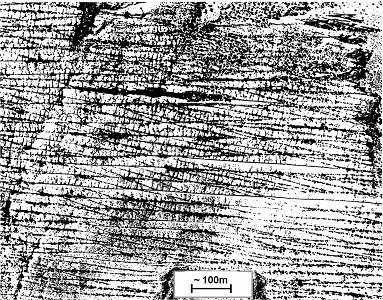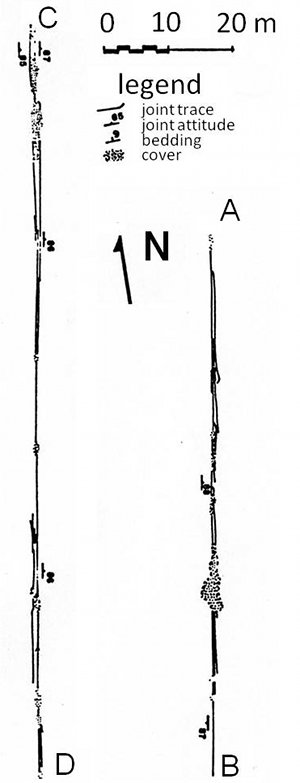| |||||||
|
|
|||||||
|
|
|||||||
| Geostatistical Properties of Joint Zones | |||||||
|
Joint zones, also known as swarms, clusters, or corridors, are a series of closely spaced joints separated by relatively wider unfractured or less fractured slabs of rocks. They show a wide variability in geometry and dimension as well as genesis. Perhaps one of the well known examples of joint zones occurs in the Jurassic sandstones exposed at the flanks of the Salt Valley anticline at Arches National Park. Figure 1 is an aerial photograph of the northeastern flank of the anticline showing a set of highly systematic joint zones in the Moab member of the Entrada Sandstone, which was described by Dyer (1979; 1983). There, the joint zones, each of which includes only a small number of joints (Figure 2), extend many kilometers sub-parallel to the strike of the bedding or from left to right in the view. Another example is shown in Figures 3 and 4 which are maps of joint traces at different scales in the Pictured Cliffs Sandstone exposed near Durango, Colorado (Laubach, 1991). These joint zones (called 'swarms' by the author) have less regular geometry than those in the Entrada Sandstone in Figures 1 and 2 and include many individual joints some of which have slightly different trends with implications for the role of shearing in the evolution of the joint zones in hierarchical scales at this locality.
| |||||||
| Types of Geostatistical Properties of Joint Zones: | |||||||
| Length of Joint ZonesWidth of Joint Zones Joint Zone Spacing Scaling of Joint Zone Network | |||||||
| Reference: |
|||||||
| Dyer, J.R., 1979 Dyer, J.R., 1983 Laubach, S.E., 1991 Laubach, S.E., 1992 |
|||||||
|
Readme | About Us | Acknowledgement | How to Cite | Terms of Use | Ⓒ Rock Fracture Knowledgebase |
|||||||


